Resources
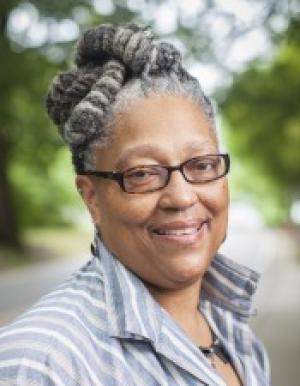
writing about teaching means that i begin with thinking about teaching and why it has always been a part of my life. both of my parents were college professors, and the worlds of books and classrooms were a part of my life for as long as i can remember. some of my earliest tangible memories about teaching are walking from my grade school—fayetteville street elementary—to the biology building at north carolina college at durham for negroes (now north carolina central university) and sitting outside of my mother’s classroom and listening to her biology lectures. she had no idea that i was there until i talked about it in my installation address at union theological seminary when I was in my late 40s. i loved listening to her teach as she was in command of the material and the classroom, and her diction was impeccable. i knew a little about some of the topics she was teaching in those intro biology classes, but not always. and it was the not-always times that caused me to lean in more closely—what i now thing of as learning. writing about teaching means that i put myself into the classroom—either an imagined or tangible one—and think about why working with students in a teaching and learning environment is an honor and can be big fun. it’s also a challenge and i find that there are times when the pain or the joy that is being shared is also a time of both spiritual and pastoral prayer. logic and reason take somewhat of a back seat for a while as the humanity of the person(s) in front of me or seated around the table comes to the fore in visceral ways. writing about teaching helps me remember why i chose it as a profession and how, although i have been in administration since 2008, i never stopped teaching in its broadest sense as being a dean is, for me, about teaching as we learn together how to be a faculty, how we shape a curriculum, how we engage the worlds around us, how we must be as present as possible to the known and the unexpected, how we work with the churches and communities around us, how we hold ourselves together by tending to our spiritual as well as physical selves. and i am reminded, once again, that teaching is about caring and love.
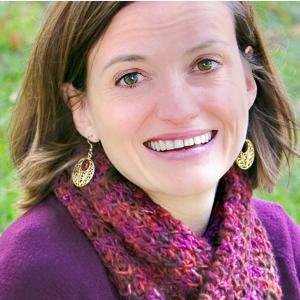
Early in the spring semester, I had another bout of feeling like an impostor in the classroom. I cannot recall what exactly prompted it this time, but the feeling was familiar, the voice in my head saying, “you do not know what you are doing. You are not the teacher these students need right now. They recognize your inadequacy, but they are just not telling you.” Later that same day, it came back with a vengeance in faculty meeting, where I felt surrounded by colleagues much smarter and more capable than I. An impostor is “a person who pretends to be someone else in order to deceive others, especially for fraudulent gain.” (Oxford Languages online) The older Oxford English Dictionary adds, “a fraud, a swindler, a cheat.” Since graduate school, I have recognized this feeling, popularly labeled “impostor syndrome.” One day during my doctoral work, I struggled to describe this feeling in the graduate student lounge with some friends, and I was startled to learn that many of my colleagues (most, though not all of them, women) had similar experiences. Many of us felt like we didn’t belong, like we are not enough. I began thinking about making a T-shirt: “We are all impostors!” There was healing in the recognition that this is a shared experience. I am not alone in feeling like a fraud. While contemplating this idea a few months ago, I learned about this recent New Yorker article by Leslie Jamison. I learned that psychologist Pauline Clance and her colleague Suzanne Imes first published their research on “impostor phenomenon” in 1978. Sparked by their own experiences of self-doubt, they had interviewed over 150 “successful” women in academia, law, medicine, and social work, and discovered that they reported a common “’internal experience of intellectual phoniness,’ living in perpetual fear that ‘some significant person will discover that they are indeed intellectual impostors.’” This idea resonated with the experiences of many folks in the decades that followed (including my own group of friends in the graduate student lounge in the late 1990s). It is a relief to know that we are all impostors. And yet. There is a danger in this diagnosis, as a new wave of scholars have begun to point out. Jamison reports: “Lisa Factora-Borchers, a Filipinx American author and activist, told me, ‘Whenever I’d hear white friends talk about impostor syndrome, I’d wonder, How can you think you’re an impostor when every mold was made for you? When you see mirror reflections of yourself everywhere, and versions of what your success might look like?’” In other words, it is important not to confuse internal struggles with self-doubt and real external injustice that may cause one to feel out of place. So, I have begun to wonder: what is the good news and what is the bad news about the impostor phenomenon? What can the feeling of being an impostor teach us, and what are its dangers? The feeling of being an impostor can remind us of one important aspect of ourselves: we do mess up. We are not perfect. In an earlier blog, I used the term “impostor” to name my deep sense of not knowing enough or being good enough at what was needed in the classroom in a particular situation. This is part of the reality that we are complex creatures with multiple stories. This is not the only thing we need to know about ourselves, but it is one part of our truth. The truth is feeling like an impostor can open us to compassion for others who feel the same, and it can make us better teachers. Two Wabash blogs in the past two years offer good examples of this: Christy Cobb’s battle with impostor syndrome as a Southerner in academia, and the way it has made her a better teacher. Anna Lanstrom on feeling like an impostor teaching about race when she does not know enough, and learning to resist perfectionism. Knowing what it feels like not to belong can help us open doors to others who feel shut out. Identifying too much with being an impostor can obscure our ability to recognize truly harmful falsehoods, such as the structural obstacles that prevent colleagues from being fully valued. Samuel Perry, professor of religious studies at the University of Oklahoma, also warns of the genuine danger of “impostor Christianity” (see also Kristen du Mez’s helpful follow-up commentary on this piece). Focusing on an internal experience of “impostorhood” must not turn us away from naming external realities that unjustly make people feel like impostors. In the end, feeling like an impostor can be good news if it opens the door to greater compassion for others. However, it can be dangerous if it keeps us mired in self-doubt, failing to see and name the injustices that masquerade as gospel.
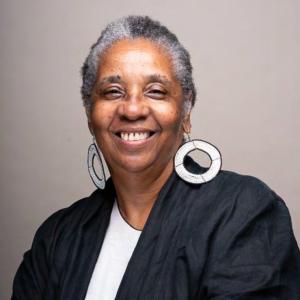
Part Three: Ritual Bring Us into a Divine Dance (the real-time, active participation in the transcendent, where the physical realm intercedes for the spiritual realm). A Divine Dance; ritual creates a divine dance between the guide and the participants, the teacher, and the learner. Ritual uses the spiritual nature of rhythm, coordinated actions and speech to invoke teaching and learning as a “divine dance.” A dance, between the life’s purpose and mission of both the teacher and the student is at the heart of the exchange. It goes beyond discrete knowledge or application of course content. Ritual, when it is intentional, steps into the spiritual realm to illuminate the lessons we came here to receive. Ritual recognizes that everyone of us comes into being to learn a set of lessons. The lessons that aid us in becoming (better) and in sharing our becoming with others so that we are all becoming (better) and belonging. Meaningfulness in learning is heightened when the learner can see and feel learning in alignment with purpose and the teacher sees and feels teaching as living-out purpose. Ritual not only pronounces this spirit work, but it also maintains this transcending dance while it seeks to intercede with earthly realities that would impede us from getting the lessons. Imagine this, a ritual lifting one’s life purpose and mission in ways that welcome, clarifiy, and situate the lessons as part of our Divine plan. Rituals create a Divine dance as expressions of wisdom and the gifts to be given as life’s mission are expressions of love. For both the student and the teacher, every teaching moment is an opportunity to learn a transcending lesson, or to give a gift. What ritual does is enlist our active participation in the unseen as it negotiates what we can see, speak, feel, and touch.
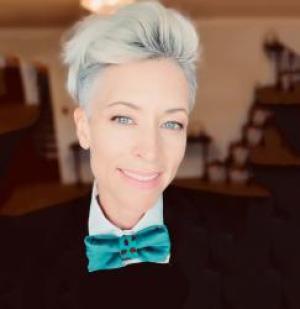
When the mundane becomes formidable, it signals lack of access.[1] For a trans person, it is precisely the perfunctory mechanics of the classroom that frustrate teaching and learning. This begins with introductions. The trans professor and student immediately must negotiate whether to share their name in class. Is it safe to share that information at the outset, or do we need time to build trust? Are intake forms and classroom norms enough of a safeguard? Toilets pose another pragmatic concern. Trans teachers and students might feel pressure to map out gender-neutral or single-stall restrooms prior to class to avoid quizzical glances or worse. Depending upon the campus, these facilities might be few and far between, meaning a menstruating trans man might have to leave class for an extended period of time in order to refresh his sanitary products. Instructors and students might be caught off guard by blatant transphobia. It arises in verbal comments, required readings, and even student papers. Syllabus policies for the prevention of misgendering classroom participants and authors of required readings is a good starting place, but it is clear that much more is needed. What trans-informed changes to institutional email addresses, for example, prevent the use of deadnames? [2] All of these examples are especially charged when linked to religion. The landscape is brutal: “2023 marks the fourth consecutive record-breaking year for total number of anti-trans bills considered in the U.S.”[3] Student-athletes face discrimination inside and beyond locker rooms while faculty seek equal access to restrooms and parental leave. Educators are wondering how to respond ethically. But beware. The instrumentalization of trans embodiment as a wedge issue within political discourse, especially as linked to religion, further disenfranchises trans persons. We learned this lesson in the 1970’s when abortion was similarly leveraged as a smokescreen for racially segregating schools, subsequently polarizing American politics.[4] Anti-trans bills likewise pit one person against another, supposedly in the name of God. To focus on the bills is to walk into a carefully set trap, allowing embodiment to be confused with essentializing materiality and reduced to identity politics. We need to reorient the representation of trans persons beyond trans issues, in part by using resources such as the Trans Journalistic Association style guide.[5] Whatever the subject of the course, contemplating trans perspectives and reading trans scholarship is valuable. Be it ecology, the prison industrial complex, or housing access, trans persons have insightful contributions—to the study and practice of religion as much as medicine and economics. Importantly, the onus cannot fall squarely on the instructor, especially when the instructor is trans. Many of the obstacles we face are due to the built environment, which is beyond our control. I would like to invite readers to consider what collective action might entail. Here I propose personal and political ethical action that neither falls prey to strategic discourses of entrapment nor neglects the practicality of embodied teaching. My shorthand for this recommendation is compassionate curiosity. In place of hypothetical scenarios, like the trolley problem or lifeboat scenario that frequent ethical inquiry, compassionate curiosity bonds classroom communities through deep soul work intended for societal transformation.[6] Compassionate curiosity solicits us to communicate with one another and discern what is most pressing within the particularities of our contexts. There is no individual or action that can bear the weight of transphobia. We need one another. With students and colleagues, practice compassionate curiosity by considering: Are there trans leaders on campus and in course material? What policy changes on and off campus would be worth prioritizing? How can we establish trans mentoring networks in religious education? Let’s ask students what changes they would like to see on campus and how they might initiate those. Explore what is important to each particular classroom of students and also share the needs of instructors. If the challenges that we face are systemic, our responsibility is not for individuals to hustle harder. Improving the classroom environment requires collaboration. Practicing compassionate curiosity in community equips us for personal and political ethical action. From compassionate curiosity we learn to recognize that when the mundane becomes formidable, we are not alone; there are choruses of folks suffering particular inequity, and together we all benefit from advocating for institutional change. [1] Access and inclusion are initial concerns, but equity is what many of us seek. [2] Hopefully these examples also resonate with people who lactate and require places to pump, fat folks in search of adequate classroom seating, BIPOC facing microaggressions in addition to overt racism, unaccommodated disabled persons, and many more. [3] https://translegislation.com/learn [4] Dorothy Roberts, Killing the Black Body: Race, Reproduction, and the Meaning of Liberty, (New York: Vintage Books, 1997); Radical Reproductive Justice: Foundation, Theory, Practice, Critique, eds. Loretta Ross, Lynn Roberts, et. al, (New York: The Feminist Press at CUNY, 2017); Mihee Kim-Kort, “Racialization Meets Purity Culture: Abortion and the Criminalization Cases Confirm That it’s About Controlling Women’s Bodies and the ‘Ideal’ American Family,” Religion Dispatches, June 29, 2022; Sue Halpern, “How Republicans Became Anti-Choice,” The New York Review, November 8, 2018; Randall Balmer, “The Real Origins of the Religious Right,” Politico Magazine, May 27, 2014. [5] https://transjournalists.org/style-guide/ [6] For more on ethical curiosity see Perry Zurn’s Curiosity and Power: The Politics of Inquiry, (Minneapolis: University of Minnesota Press, 2021). Concerning terms of engagement, see Marshall B. Rosenberg’s Nonviolent Communication: A Language of Life, (Encinitas: PuddleDancer Press, 2015).

I have been learning over the last several months that transition is not the same thing as change. Change is something I live with every day as I battle the side effects of diabetes—not ever knowing if my feet will betray me or my hands remain cold all day. Change is a part of my life and living as I see new things from the folks I work with everyday, but then there is a quirk of phrase, the sidelong look, the slight roll of the eye that I had not seen before. Change is something I am trying to make my peace with as I age and get closer to the ages that my parents died, and worry, what this will mean for my spouse and my only sibling, my sister, who is managing mental illness in magnificent ways. Who will be their confidante? Who will be their big sister? As I prepare to leave the deanship at Vanderbilt Divinity School, I am very aware that this transition thing is a whole ‘nother thing altogether. Because it means that I can’t just react to my disease and try to stay on top of it. I can’t just acknowledge that there are some physical acts that I used to do with ease and now, if I can do them at all, they do not come easily or look slightly askew. Transition means that I am leaving something I’ve done and loved but realize that it is time to move on. It is bitter and it is sweet. And there are large parts of the future that I do not know about but have a dim awareness that they are out there. There is only so much I can know about what the full textures of this transition will be. So, I make to-do lists in my head, in print, and then talk about them with the folks in my life and I say over and over again that I am looking forward to what this transition will mean. But I suspect that a part of me is really only doing this as a profound exercise in hope. Because I do like control and order and there is simply the unknown until I walk into this transition each day, hoping that it will be alright and that I do lead well until I no longer carry the marvelous responsibility of my school in ways that only the dean can. And what little I am sure of is that I am looking forward to full-time classroom teaching after a long sabbatical but it will be like learning to ride that bike again. Only this time it’s electric.
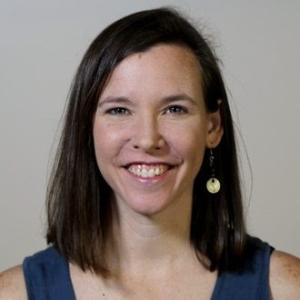
When utilizing embodied pedagogy, I am constantly aware that my own experience and positionality is limiting. I am a white woman from the southern part of the United States who is currently living in Denver. I have traveled some and have lived in several cities around the United States, but I have never lived abroad. I teach seminar-style classes where dialogue is prioritized and my students speak often. When creating my syllabi, I assign readings that represent a diversity of scholars, and which are mostly academic in focus. But even though I prioritize these things, it is impossible to represent all voices and perspectives in one course. I want to bring in stories and experiences of people from around the world, though, and I want these voices to enter the classroom, to be part of our dialogue. One way that I attempt to do this is to assign novels. Through these readings, fictionalized bodies enter the space of the classroom and allow us to broaden our view of various topics. Last quarter, I taught an introductory level course called World Christianities. One of the course objectives was to outline how Christianity grew from a small group of Jesus followers in a specific region of the world into a global religion with devotees around the world. A second objective was to acknowledge how this transition happened through violence, missionary work, colonialization, enslavement, and various forms of manipulation. To cover a topic like this in a 10-week quarter felt overwhelming at first, and I began to think of authors that I could include who could speak to the distinctiveness of Christianity in a part of the world that is distinct from my own teaching context. The novel I chose was A Grain of Wheat by Ngũgĩ wa Thiong’o. The story is set in Kenya in the 1950s and 60s, during the Mau Mau rebellion and the fight for Kenya’s independence from Britain. The main character, Mugo, spends time in a detention camp run by British colonizers, and he struggles inwardly with his interactions with colonizers, even though his village views him as a hero. Through this fictionalized story that is based on historical events, Ngũgĩ reveals the complexity of his own experiences living in a colonized place like Kenya. As Ngũgĩ discusses in this piece, choosing to write in English, the language of the colonizer, is itself a political decision. Ten years after writing A Grain of Wheat, Ngũgĩ decided to only write in Gikuyu, his mother tongue and the language of his community. I encouraged students to read this novel throughout the course, and we discussed it together during two of the final classes. During one session, we focused solely on the experiences of the characters in this novel. We used the narrative to imagine their experiences and also the ways that Christianity impacted their lives. On the one hand, many characters in A Grain of Wheat were impacted negatively by the impact of Christianity, especially as it was entangled with colonialization. On the other hand, some characters embraced aspects of Christianity and were empowered by certain biblical stories. For example, Kihika (who becomes a martyr after his death) carried a Bible with him and underlined passages of importance to him. After his death, the Bible is passed along to his family and friends who reread the passages he underlined. The text becomes a source of hope to the community. I assign novels in other classes as well. In a course I teach called Women, Gender, and the Bible, I give a list of possible novels that the students can chose from in order to follow their interests. For this class, I include novels such as The Handmaid’s Tale, Parable of the Sower, and The Color Purple. When we discuss the novels, I put the students into discussion groups according to which novel they chose. I then dedicate a class session for the groups to introduce their novel to the rest of the class. The goal of their presentation is to “convince” the other students to read this novel. At the end of the class we have a vote as to which presentation was the most convincing. Similarly, when I taught a course on Jesus in Text and Traditions, I assigned The Book of Longings to provide an imaginative view of the ways in which women could have been involved in Jesus’s life and ministry. Assignments like these have been beneficial additions to my syllabi, and they illustrate my pedagogical goal of creating classroom spaces that include a variety of perspectives as a way of encouraging dialogue. Fictional characters are embodied characters. The experiences they bring into the classroom enhance the content of the class in a number of ways. Returning to the example of Grain of Wheat, the students in World Christianities brought this novel up in their final presentations/projects and also in the course evaluations. They appreciated the inclusion of a story from another part of the world. This one novel provided them with multiple viewpoints of how Christianity impacts a community. In the space of the classroom, these fictionalized bodies came to life and spoke to us about their experiences. In a way, characters like Mugo and the novelist Ngũgĩ joined our classroom and dialogued with us, sharing their experiences and listening to ours.

Due to a snow delay, my seven-year-old daughter came with me to class the other day. I teach an honors’ version of our intro Religions of the World course in the morning. She sat at a desk in the back corner of the room, working on a story about, I think, vampires. She nibbled on peanuts. She was the world’s cutest TA. At the end of class, as we were walking back to the car, she said, “Mom, I noticed that the students didn’t laugh at any of your jokes.” A pause. “Was this EMBARRASSING for you??” I laughed and told her, “No, not really, I’m used to it.” I like being a silly willy,” I said, “and it doesn’t really matter to me if they like it.” Most of my students don’t get my sense of humor. They don’t know the references that some of my jokes depend on; I once made mention of the TV show Friends in a class and all I got back were blinking eyeballs. This was not a high point. We don’t share much these days, me and my students. I constantly feel like that Steve Buscemi gif (“How do you do, fellow kids?”). Or maybe my students do get my jokes and they simply don’t think the jokes are all that good. Oh well. ¯_(ツ)_/¯ Silliness can be tricky (and is often presented as inappropriate) in professional contexts. Obviously, people don’t always find the same jokes funny. We may worry about offending. Enough self-deprecating digs and we may start to inadvertently undermine ourselves. There are definitely risks to making light of certain topics—or even being perceived as doing so. (Though some of the sharpest social critiques come in the form of satire, like The Onion simply reposting the same story about gun violence every time a mass shooting occurs in the United States.) But I also sense a resistance to silliness (and playfulness and jokes and levity and all the like) in certain corners of academia, specifically. There seems to be an association between being serious and being taken seriously. That somehow our intellectual cachet or credentials are tied to big words and furrowed brows and the cult of busyness. Certainly we academics have a reputation for humorless stuffiness, paired properly with a tweed jacket and a pocket watch, of course, even if it isn’t true. I do worry sometimes that people think I’m light on substance simply because I’m quick to laugh. Some scholars have written about how incorporating humor into the classroom can have benefits for students and their learning. I would like for this to be true in my classroom too—at the very least, I don’t want my jokes to HARM anyone—but this isn’t mainly why I deploy humor. It’s not some savvy or strategic teaching technique. I do it because this is a part of who I am—an important part of who I am—and I do not want to have to become a different, fragmented, or shell of a person when I teach (or do any other part of my job). I want to be whole—as whole as I can possibly be—when I show up in the classroom. There is enough emotional labor involved in teaching (and I’m using this term in the way Arlie Hochschild actually meant it) to tire even the best of us out. Not being authentic during the hours I teach requires additional levels of effort and exhaustion that I simply do not want to exert, if I can help it. And I want students to witness this wholeness, even if it turns out not to be their cup of tea. (Not unrelated, this is part of the reason I brought my kid to class. I’m a mom…and I refuse to pretend I’m not in order to be “professional.”) My self is not there to please students—or to conform to what (I assume or can discern) they might find pleasing. Who I am is not (or should not be) up for others’ approval or adjudication. Maybe there is a lesson in that for them too. Now, as I’ve written before, there are obviously risks to disclosing who we really are in the classroom, especially depending on the identities some of us hold. (And there are aspects of our whole selves that do not deserve to be shared with people like students who haven’t necessarily earned our trust.) But being silly is an aspect of my personality that feels genuine and low-stakes enough to bring into the classroom space. It feels good to be me, for as many hours of the day as possible. For what it’s worth, my daughter doesn’t think I’m very funny either. She’ll get me some day. Or she won’t. It doesn’t matter. ¯_(ツ)_/¯
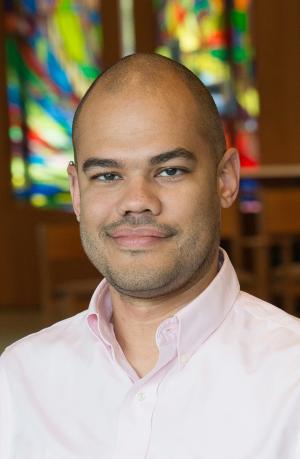
Before March 2020, the seminary where I teach didn’t do much in the way of remote learning. Like many educators, my colleagues and I found ourselves rushing to take our teaching online at the same time that many of our students were taking courses remotely for the first time. My colleagues and I found this new mode of teaching terribly awkward. Most of them found that awkwardness frustrating. Not me, though. I was gifted from childhood with a certain awkwardness. It’s cozy. Still, the awkwardness of remote learning wasn’t the only concern being raised in faculty meetings, especially as we were discerning the extent to which we would offer remote learning going forward. That awkwardness was increasingly framed as the consequence of a claim that had more weight behind it in conversations about theological education: that remote learning was disembodied. It seems obvious. When teachers and students aren’t in the same space, but instead find our interactions mediated by a screen and who knows how many miles of cables or electromagnetic waves of various sorts, our teaching and learning are necessarily disembodied. We lose the nonverbal feedback on which we so often rely in conversation. The flow of our class discussions becomes awkward, either with one person talking over another or with everyone raising their virtual or physical hands and waiting just a little too long to be called on. It is difficult to keep students’ attention for hours on end if we aren’t physically in person, and it’s hard to foster that sense of classroom community that often grows over the course of a term. It seems obvious that remote learning is necessarily disembodied learning… but that’s not actually the case. Everything we do, we do as creatures of flesh and blood, pain and pleasure, energy and fatigue. When our teaching and learning aren’t practiced in a shared physical space, they are nonetheless practiced in physical spaces that meaningfully impact our learning, in bodies that each have their own mix of needs and abilities. Our reception, processing, and expression of ideas are embodied processes, wherever our bodies happen to be in relation to one another. Intellectual, emotional, and spiritual engagement with teaching and learning happens within and between bodies. Remote learning is not necessarily disembodied. It just turns out that teaching techniques designed to harness one form of embodiment don’t always translate well to a significantly different form of embodiment. If we can accept that no teaching and learning are necessarily disembodied, but that they must be embodied differently, it is possible to turn what feels like disembodied teaching and learning into teaching and learning that are embodied in particularly meaningful ways. For those who—like me—continue to wonder just what it means to engage in embodied teaching at a distance, I offer three suggestions: Let go of the need for controlled learning environments in favor of precisely the kind of adaptability students will need in their own work. Consider how you might model and promote such adaptability in your teaching. Reflect on the value of people working in their everyday spaces (e.g., offices, homes), rather than the constructed space of the in-person classroom. Discern how you might invite people to treat their everyday spaces as spaces for learning just as they are, rather than as something out of which learning space must be carved. Re-commit to the truth that being embodied together in ways that promote rich learning—marked by equity no less than serious intellectual engagement—requires intentional practices of community formation, whether we’re in the same physical space or at a distance.
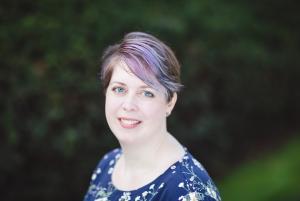
…and they had the best class ever. I was honestly surprised I made it a whole month into the semester before getting sick, what with a preschooler at home. Much of the time, despite everything we should have learned from COVID, I strap on a mask and go teach anyway – but this time, my voice was gone and I felt like I’d been hit by a truck. I had to cancel classes. At least, I thought I did. My introductory course wasn’t going to happen, but what about my majors- and minors-only seminar? It was a new course, filled with mature students I had invited to study theology more deeply, and the whole point was that it was discussion-based. They could do that without me, couldn’t they? It was a wild morning – I decided to NOT cancel the seminar, but wanted to be sure I shaped the space and had some accountability for it, so I spent all the moments in my doctor’s waiting room typing out ideas on my phone. Before the class met, I had a structure ready. A colleague was going to go “start” the class for me by reading our weekly Alice Walker poem and handing out materials; students would have worksheets and assigned groups for a critical reading activity where they examined our text (a passage from Teresa of Avila) for aspects they thought were relatable and useful, or irrelevant and unhelpful. I also gave all twelve students a task for the day – everything from timekeeper to worksheet distributor, discussion leader to careful note-taker, and clock-watcher to pacing/energy manager. About half of them were told to send me materials as soon as class ended – pictures of their notes, or the sheets they filled out, even just emails to tell me how things went. After that, all I could do was sit at home in my robe with a hot cup of tea, and wait. The emails started trickling in about an hour after class was due to end. “Everything went really well!” one adult student gushed. “We stayed the whole time!” (I had explicitly told them it was okay if they decided to finish up early). When I saw notes and the filled-out worksheets, I was a bit startled at how detailed everything was. Despite not hearing the discussion, I could get the flavor of it – long story short, my students don’t like it when women writers in spirituality are self-deprecating, and they were annoyed that Teresa of Avila kept undercutting her own authority by calling herself a “mere woman” (fair enough, blossoming feminist theologians). By the time I was back on campus and started running into students from that class, it became clear that they’d had an unexpectedly delightful time. “We were so nervous!” it always started out, “But once we got going, everybody was really engaged!” By the time we met again a week later, I was confident in opening class by saying, “So what do you want to talk about?” while I sat back and ate crackers from a missed lunch. There was some hemming and hawing, but after a minute or two, they launched into the topic of the week. I almost felt unnecessary. Aside from tremendous pride in my students, the biggest lesson I took away from this unorthodox day of teaching was to get out of my own way. It doesn’t seem like a hard lesson, except that I’ve spent all my years at this institution pushing in exactly the opposite direction. The students who show up in my introductory courses are predominantly anxious – most have never studied religion before and are fearful of the difficulty of the course. One of the ways I help them feel more confident is by tightly controlling the space and making the boundaries and parameters clear – you will be in small groups for this many minutes, have one answer to share about that question, etc. When they know what I expect of them, they relax, and we have better interactions overall. It’s not quite the open forum that I loved in many of my favorite undergraduate courses – the ones that started with “well, what did you think of the readings?” and went from there – but it’s appropriate to the situation, and it works. I knew it might be a little tricky to switch out of that mode for my seminar class, but I had underestimated how intentional I would need to be to not take over the room. It turns out that not being in the room in the first place was the hard reset I needed. I was still present in the ways that I shaped the space and crafted the reflective forms of learning, but students didn’t need my voice to be so loud when they were still learning how to amplify their own. I’m still early enough in my teaching career that it’s helpful to have reminders that I’m not growing into just one type of professor; I’m growing into being several types of teacher that I can pull out when I’m in the appropriate context. This semester, I’m going to aim to enjoy both the courses that I carefully control, and the one where I should be more of a fly on the wall. And in the future, I might strategically abandon my students a little more often, just to see what they can do without me.
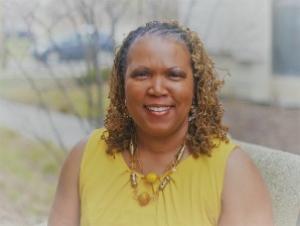
There is a setting on Zoom which allows participants to blur their background. The individual is fully aware of the personal home, office, car, or other location. However, viewers on the Zoom line, if you will, have to guess or surmise the place behind the face. I know where I am. You are left to nebulously wonder. As professors we show up in the classroom, whether on campus or online, fully aware of how we are feeling. There are joys that call for jubilation and heartaches which weigh heavily. We know. We try to prevent our students from knowing. For the sake of pedagogical performance, we attempt to hide those morose monuments. In our teaching we make valiant strides to blur the burdens beckoning us back to bed. So that the language of hermeneutics, theology, religious studies, sociology, ethics, and pastoral care and counseling carry the day, we mute our emotions. There is a tendency to show up poised and put together when in reality we are a puddle of tears. We dare not permit a clear screen of pain and anguish. Thus, through an obscure framing we don a mask of dis-ease and discomfort. Since the onset of what is now the endemic presence of COVID-19, teaching has had to muddle through communal conundrum and global grief. I dare not aver that there was not such widespread distress before the pandemic: #BlackLivesMatter, #MeToo, the Civil Rights Movement, the Cold War, the Rwanda Crises, the HIV/AIDs epidemic, earthquakes in Haiti, and the Spanish Flu, to name a few, were all large scale crises that did not escape classroom discussions. These watershed moments continue to shape course content. Ours is an ancestry of crisis pedagogy with the purpose of trying to create progeny change agents. We cut our teeth on teaching while grieving. Recent events continue to prove fodder for our goals to mold social activists, social catalysts, justice leaders, pastors, counselors, and professors. Another mass shooting in the United States, a war in Ukraine, deadly earthquake decimation and demise in Turkey and Syria, and more deaths from COVID-19 appear antithetical to what we are trying to accomplish in the classroom. Ours is the task of nurturing persons who will love mercy, do justice, and walk humbly when it seems that yes, the world is going to hell in a handbasket. And yet, we continue to teach. #WePersist. A macrocosmic lens gives broad strokes. These we cannot blur, per se. However, the microcosmic, personal matters we want to keep at arm’s length. Ours is not the tendency to announce to our students news of a tenure and promotion denial or an article rejection. We swallow the agony of being an empty nester longing for our children as advisees demand the care we’ve reserved for our loved ones. Professors and administrators have struggled to be there for students when members of their own families died, lost jobs, and became ill due to COVID-19. This is the blurring. So what do we do? This was not meant to be a doom and gloom, woe-is-me writing exercise. I would like to encourage us, encourage me, to be more transparent. Imagine showing up in the classroom and honestly telling your students, “I am not okay today.” A statement of “I am struggling” from a professor could free classroom colleagues to relax, relate, and release. I am not saying everything needs to be shared, nor all the time. I also realize the potential maternal repercussions if I, a Black, cisgender, female professor, dare to be vulnerable. However, instead of blurring the background, how about allowing our emotional and tender forefronts to boldly manifest. In freeing ourselves, our classrooms can become a means to liberate our students. Our teaching task is to model the humanity of the profession. We do ourselves and our students a disservice when we obfuscate our dejection and obscure our despondency. I would posit that our mental health and wellness depend on our willingness to safely, openly unloose our stammering tongue. Teaching while grieving can make for fertile pedagogical ground. We grieve because we love. We grieve because we have lost what we love. May we honor the teaching, what we learn from grieving.
Grant Coaching
The Wabash Center understands our grants program as a part of our overall teaching and learning mission. We are interested in not only awarding grants to excellent proposals, but also in enabling faculty members to develop and hone their skills as grant writers. Therefore we offer grant coaching for all faculty interested in submitting a Wabash Center Project Grant proposal.
Sarah Farmer, Ph.D.
Associate Director, Wabash Center
farmers@wabash.edu